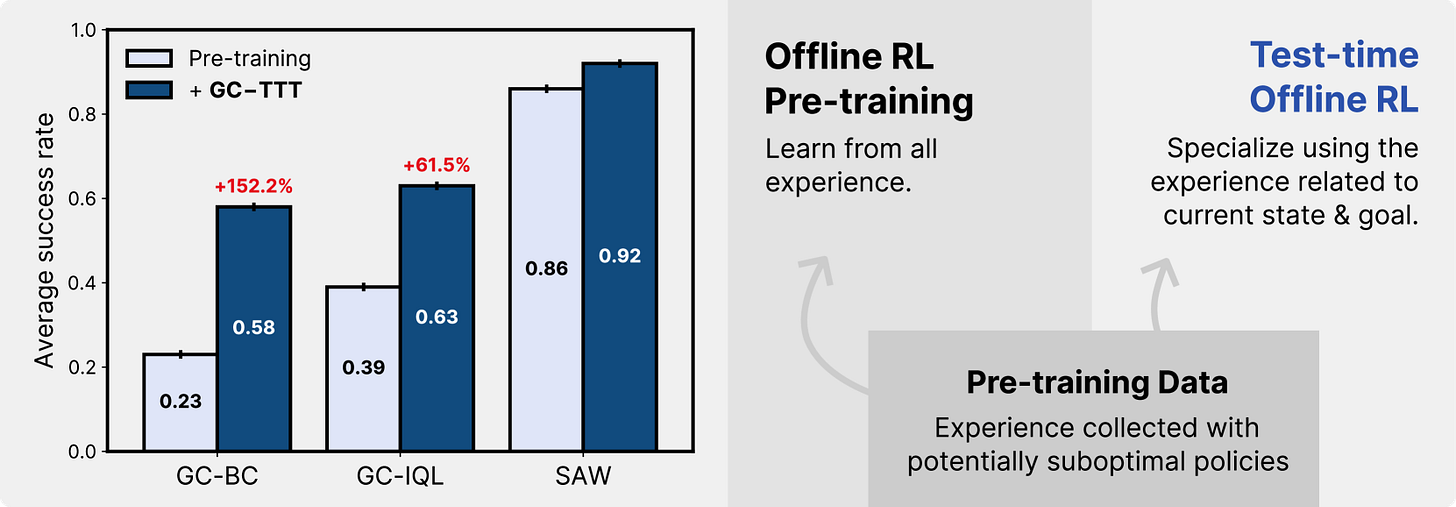ETH AI Digest: #18
Single-image 3D detection, smarter policy adaptation beats bigger models, and NVIDIA's GPU communication secrets unveiled
In this week's digest:
3D Object Detection from Single Images — 3D-MOOD lifts 2D detections to 3D space with geometry-aware lifting, achieving state-of-the-art performance on novel objects and scenes
Test-Time Policy Fine-Tuning — GC-TTT dynamically adapts reinforcement learning policies during evaluation using relevant training data, outperforming larger models efficiently
Inside NVIDIA's GPU Communication — Comprehensive analysis of Nvidia GPUs architecture reveals optimization secrets for distributed AI training through three protocols and collective algorithms
Selected Papers of the Week
1. 3D-MOOD: Lifting 2D to 3D for Monocular Open-Set Object Detection
Novel framework detects unseen 3D objects from single images using geometry-aware lifting.

✍️ Authors: Yung-Hsu Yang, Luigi Piccinelli, Mattia Segu, Siyuan Li, Rui Huang, Yuqian Fu, Marc Pollefeys, Hermann Blum, Zuria Bauer
🏛️ Lab: Computer Vision and Geometry Group
⚡ Summary
This paper addresses the challenge of detecting novel 3D objects in unseen environments using only monocular images.
The authors introduce 3D-MOOD, the first end-to-end approach that lifts open-set 2D detections to 3D space through a specialized bounding box head and geometry-aware query generation.
Their canonical image space resolves ambiguities between image, intrinsics, and depth across diverse datasets.
Experiments show state-of-the-art performance on both closed-set and open-set benchmarks, demonstrating robust generalization to novel objects and scenes.
2. Test-time Offline Reinforcement Learning on Goal-related Experience
Fine-tuning policies during evaluation with relevant experience dramatically boosts performance in offline reinforcement learning.

✍️ Authors: Marco Bagatella, Mert Albaba, Jonas Hübotter, Georg Martius, Andreas Krause
🏛️ Lab: Learning & Adaptive Systems Group
⚡ Summary
Standard reinforcement learning methods freeze policy parameters after training, often underperforming on specific goals.
This paper introduces Goal-Conditioned Test-Time Training (GC-TTT), which dynamically fine-tunes policies during evaluation using data from the training dataset that is relevant to the current situation.
By periodically adapting the policy to the current state and goal, GC-TTT significantly improves performance across various environments and algorithms.
The authors show this approach is more effective than simply using larger models, offering a more efficient path to better performance.
3. Demystifying NCCL: An In-depth Analysis of GPU Communication Protocols and Algorithms
Unveiling the hidden architecture behind NVIDIA's GPU communication library for optimized collective operations.
✍️ Authors: Zhiyi Hu, Siyuan Shen, Tommaso Bonato, Sylvain Jeaugey, Cedell Alexander, Eric Spada, James Dinan, Jeff Hammond, Torsten Hoefler
🏛️ Lab: Scalable Parallel Computing Lab
⚡ Summary
This paper provides a systematic analysis of NCCL's internal architecture, revealing how it orchestrates high-performance GPU communication in distributed systems.
The authors examine three communication protocols (Simple, LL, LL128), data transfer mechanisms for intra-node and inter-node communication, and collective algorithms like Ring and Tree AllReduce.
These insights have been integrated into ATLAHS, a simulation toolchain that accurately models communication patterns in large-scale AI training workloads.
By demystifying NCCL's internals, this work helps researchers and engineers optimize collective operations and design future high-performance communication libraries.
Other noteworthy articles
Domain Generalization and Adaptation in Intensive Care with Anchor Regression: Causality-inspired methods boost out-of-distribution performance in intensive care prediction, revealing when external data helps most
Benchmarking Filtered Approximate Nearest Neighbor Search Algorithms on Transformer-based Embedding Vectors: No universal winner: comparing vector search algorithms on high-dimensional transformer embeddings with real-world filters
Personalized Exercise Recommendation with Semantically-Grounded Knowledge Tracing: ExRec: Enhancing educational AI with semantic knowledge tracing and model-based reinforcement learning



